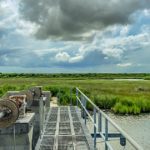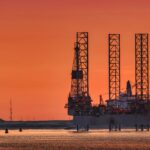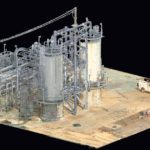The oil and gas industry is vital in powering the modern world, providing the essential energy resources that drive global economies and support daily life. The sophisticated and technologically advanced structures, known as oil rigs, are central to the industry’s success.
Building an oil rig is a monumental undertaking, requiring the collaboration of numerous skilled professionals, ranging from engineers and project managers to fabricators and support staff. The process involves meticulous planning and execution, with teams working together to ensure the rig’s safety, efficiency, and reliability.
In this article, we will be diving into the process of building an oil rig, including how long it takes, how many people will be needed to complete the work, and factors that might complicate things. But let’s start at the beginning.
What Is an Oil Rig?
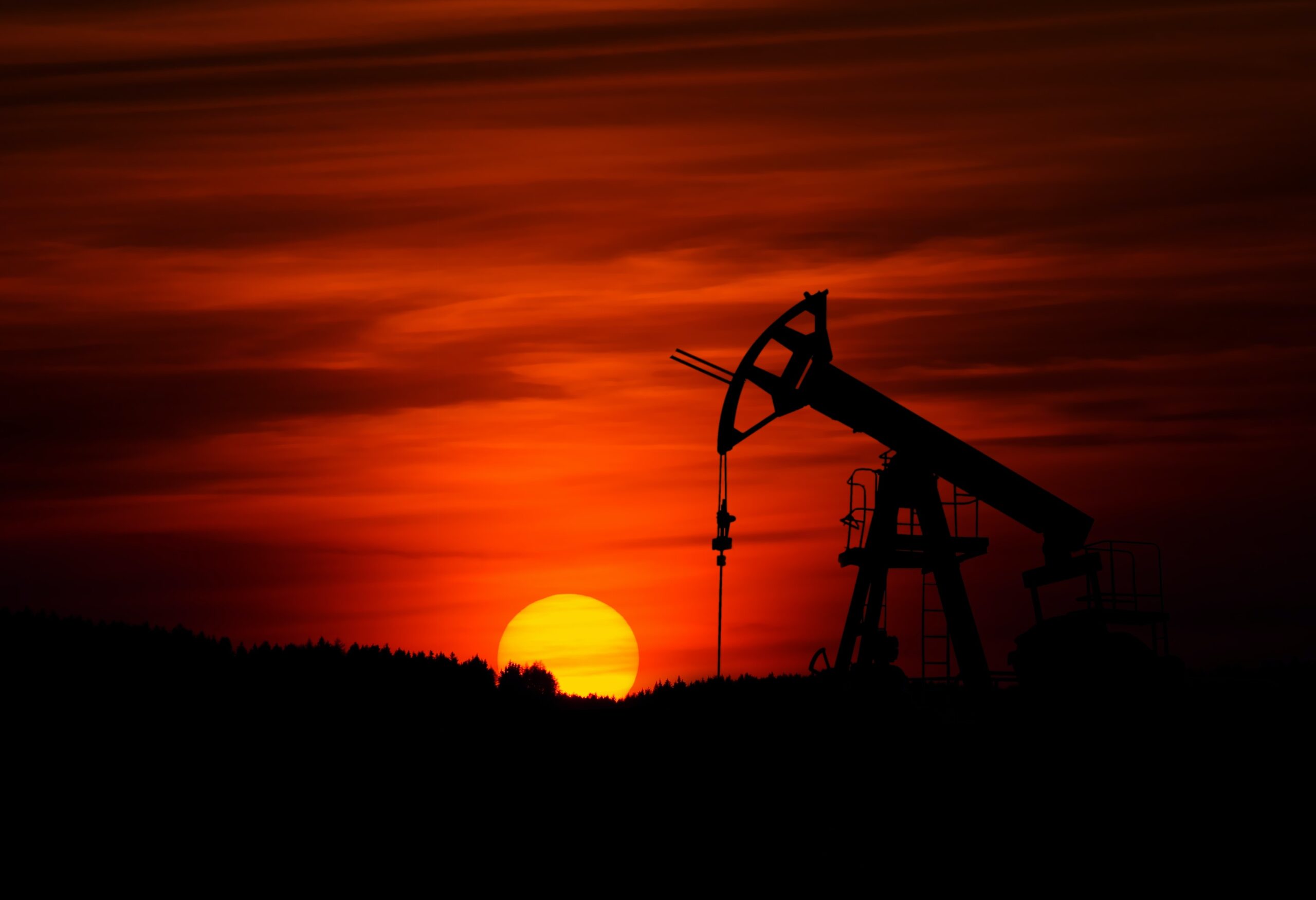
via Unsplash
An oil rig, also called a drilling rig, is a massive mechanical structure designed to explore and extract oil and natural gas beneath the Earth’s surface. These structures can be found both on land (terrestrial) and at sea (offshore), with each type tailored to its respective environment.
Offshore oil rigs are typically found in the ocean and are either floating platforms or permanently affixed structures anchored to the seabed. Just like terrestrial oil rigs, offshore oil rigs are intended to drill into the Earth’s surface to access the pockets of oil and gas underneath – but in this case, they are drilling into the ocean floor to do so.
The primary function of an oil rig is to drill deep into the Earth’s crust to access hydrocarbon deposits trapped in rock formations, typically located thousands of feet below the surface. The drilling process involves using a rotary drill bit, which is attached to a long drill string and powered by powerful motors.
As the drill bit penetrates the Earth’s layers, drilling mud is circulated to stabilize the wellbore, cool the drill bit, and remove cuttings from the hole. Once the target reservoir is reached, a casing is installed to prevent the well from collapsing, and production equipment is put in place to extract the oil or gas.
This usually includes a series of valves, known as a wellhead or “Christmas tree,” to control the flow of hydrocarbons and maintain well pressure. After extraction, the oil or gas is either processed on-site or transported to refineries for further processing and distribution.
But in the simplest terms, an oil rig is essentially a large machine used to drill holes deep into the Earth with the intention of extracting oil. Onshore and offshore oil rigs, though they have many differences, both serve the same purpose.
How Long Does It Take to Build an Oil Rig?
Generally, the entire process, from planning to commissioning, can take anywhere from 18 months to five years. The construction timeline for an oil rig can vary significantly depending on several factors, such as the type of rig, location, size, complexity, and availability of resources.
That means it’s important to ensure all steps are being taken properly along the way – otherwise, the investment, of both time and resources, might be at risk.
Initially, the process begins with geological surveys, environmental impact assessments, and the acquisition of necessary permits, which can take several months to a few years. Once the appropriate approvals have been obtained, the actual construction phase commences.
For land-based rigs, construction is relatively faster, often taking between 18 months and three years. This includes site preparation, fabrication of the drilling structure, equipment installation, and utility hookup. The accessibility of land-based locations and the availability of local infrastructure play a significant role in accelerating the construction process.
On the other hand, offshore oil rigs are more complex and take longer to build, typically ranging from three to five years. That’s because offshore oil rigs often require more complex infrastructure. In fact, they have been described as cities floating in the ocean, looming above passing ships. Often, workers will live, eat, and slip on offshore rigs to perform necessary monitoring and maintenance.
Following the completion of construction, both offshore and terrestrial oil rigs must undergo a series of tests and inspections to ensure it meets regulatory requirements and industry standards. This final stage can take several weeks to months before the rig is fully operational and ready to begin drilling. This step simply cannot be rushed, as quality control is essential.
Factors That Affect the Length of Time to Build an Oil Rig
Many factors influence the time it takes to build an oil rig, ranging from the planning stage to the actual construction and commissioning. Understanding these factors can provide insight into the complexity of oil rig construction and the challenges faced. Here are some of the most important factors to consider:
Type of Rig
The construction timeline differs between land-based and offshore rigs. Offshore rigs are more complex and typically take longer to build due to the need for specialized materials, equipment, and transportation. Terrestrial rigs are more time-efficient and will also typically need less maintenance over time.
Geological and Environmental Considerations
Geological surveys, environmental impact assessments, and regulatory approvals are crucial in the planning phase. These assessments help determine the project’s feasibility and may require additional time for approval, modifications, or mitigation measures. It’s important to consider geological and environmental factors with any oil and gas project.
Rig Design and Size
The complexity of the rig design, including its size and capacity, may require additional engineering, fabrication, and assembly time. That could slow down the process of constructing the oil rig altogether.
Resource Availability
Access to skilled labor, materials, and equipment is essential for efficient construction. Shortages or delays in procuring necessary resources can extend the overall timeline. Supply chain issues have, in recent years, proven to be an increasingly prominent obstacle when it comes to building oil rigs.
Location and Logistics
The construction site’s remoteness and accessibility affect transportation and logistics, impacting the time needed for mobilization, transportation of materials, and workforce accommodation. More rural sites might require lengthier travel, for instance.
Weather and Working Conditions
It comes as no surprise that adverse weather conditions can delay the construction progress of an oil rig. This is especially true when it comes to offshore rigs. Due to being in the middle of the ocean, severe weather can have an increased effect on the length of these projects.
Regulatory Requirements and Inspections
No matter what type of oil rig you’re building, you must adhere to regulatory requirements and complete the necessary inspections. Meeting and passing these requirements can add time to the construction process, as modifications may be needed to ensure compliance. But this is an important step that should not be skipped over.
Considering these factors, it becomes apparent that constructing an oil rig is a complex and time-consuming process, requiring meticulous planning, coordination, and execution to ensure a safe and efficient operation.
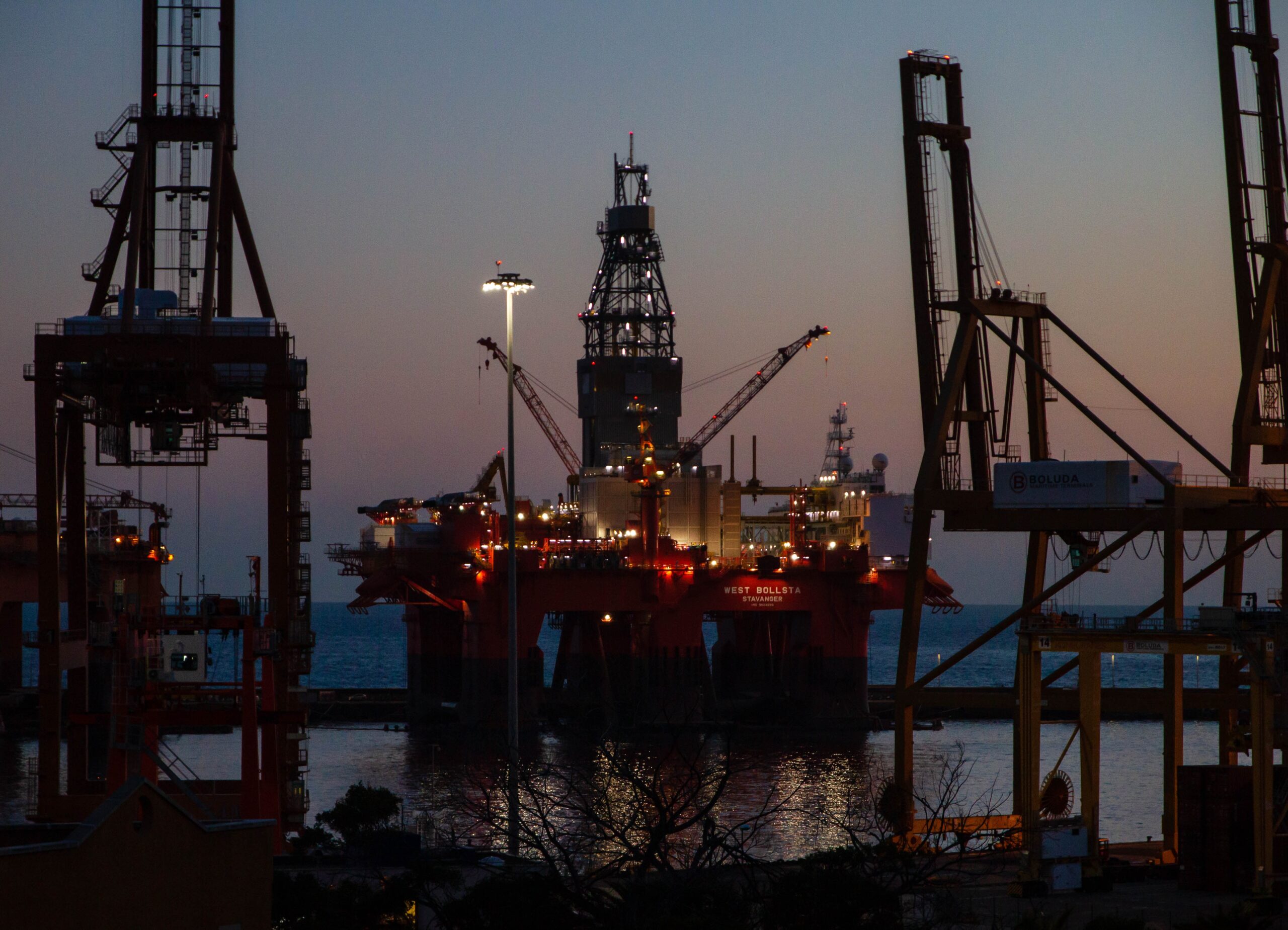
via Unsplash
Offshore Oil Rigs
Offshore oil rigs emerged in the late 1950s as the oil industry began exploring deeper waters for oil resources. Technological advancements have enabled drilling vessels to access oil up to 12,000 feet deep, with the Japanese research vessel Chikyu capable of drilling 23,000 feet below the seabed. The growing oil demand has driven innovation in developing various rigs to cater to different conditions and depths.
Semi-submersible platforms are massive floating vessels that rest on columns secured to pontoons, offering stability even in rough waters. Jack-up rigs are used for shallow wells and feature three or four legs secured to the ocean floor, allowing the platform to move up and down with changing water levels. Highly in-demand drillships are mobile and can operate in remote locations with fewer supply trips.
Here are some other common types of offshore oil rigs:
- Compliant towers
- Condeep platforms
- Fixed platforms
- Normally unmanned installations (NUIs)
- Spar platforms
- Tension-leg platforms
Onshore Oil Rigs
Onshore oil rigs are crucial in extracting oil and natural gas from beneath the Earth’s surface. These land-based structures offer different drilling options depending on the geological formation, depth, and location. The two primary types of onshore oil rigs are called mobile and conventional.
Mobile Rigs
Mobile rigs, also known as portable drilling rigs, offer flexibility and ease of transportation to various locations. They are designed for quick assembly and disassembly, allowing operators to move between drilling sites with minimal downtime. Mobile rigs are typically used to drill shallow and medium-depth wells or explore remote or challenging terrains.
The most common rig forms are truck-mounted, trailer-mounted, and skid-mounted rigs. Truck-mounted rigs are built on heavy-duty trucks, providing excellent mobility and faster rig-up and rig-down times. Trailer-mounted rigs are built on trailers and can be towed by trucks or tractors, offering greater maneuverability and flexibility.
Skid-mounted rigs are built on skid foundations, which can be moved using specialized equipment, making them suitable for locations with limited access or where transportation of other mobile rigs is challenging.
Conventional Rigs
Conventional rigs, or stationary or fixed drilling rigs, are larger and more robust structures used for drilling deep and complex wells. These rigs are designed for long-term operations in a single location, offering greater drilling capacity, stability, and safety than mobile rigs.
Conventional rigs are typically used in areas with established infrastructure and known hydrocarbon reserves, where multiple wells are drilled nearby. These rigs consist of several components, such as the derrick, drilling floor, draw works, mud pumps, and power generation units, all mounted on a solid foundation.
The derrick, a tall steel tower, supports the drilling equipment and enables the handling of drill pipes and casing. The drilling floor is where the actual drilling operations occur, with equipment such as the rotary table, top drive, and drilling crew working together to drill the well.
The choice of rig that best suits each project depends on factors such as geological conditions, well depth, location, and project duration, ultimately ensuring efficient and safe extraction of oil and natural gas resources.
How Many People Does It Take to Build an Oil Rig?
The number of people required to build an oil rig varies depending on factors such as the rig’s type and size, the project’s complexity, and the construction timeline. Building an oil rig is a highly collaborative effort that involves multiple teams of skilled professionals working together to ensure the structure is safely and efficiently constructed.
The workforce building an oil rig can generally be divided into several groups, including engineering and design, project management, fabrication and assembly, and installation and commissioning.
The engineering team alone can consist of many workers that would be responsible for projects like the following:
Dimensional Control Surveying
Dimensional Control Surveying is one such technique employed in oil rig construction, involving a team of surveyors who use advanced measurement equipment to accurately capture and monitor the rig’s geometry throughout the fabrication process. This helps ensure that components align correctly and fit together as intended, reducing the risk of costly rework and delays.
Terrestrial Laser Scanning
Terrestrial laser scanning is another technology surveyors utilize during construction. By capturing high-resolution, 3D information about the rig’s structure, this technique provides a detailed and accurate representation of the site, enabling better decision-making and increased efficiency.
Drone Imagery
Drone imagery offers additional information, as drone pilots and data analysts use aerial photography and videography to view the construction site comprehensively. This bird’s-eye perspective facilitates improved communication and coordination among various teams and enhances safety by identifying potential hazards and monitoring progress.
Constructing an oil rig is a complex and collaborative process that involves numerous skilled professionals, each playing a critical role in ensuring the rig’s safety, efficiency, and reliability.
Among the various teams building an oil rig, some specialized roles incorporate cutting-edge technology to ensure precise measurements and accurate construction.
Final Thoughts
The oil and gas industry relies heavily on various types of onshore and offshore oil rigs constructed by teams of skilled professionals. Advanced technologies and engineering techniques ensure the safe and efficient extraction of hydrocarbons, enabling the industry to power our modern world and drive global economies.
A consulting firm specializing in environmental engineering—like Fenstermaker—will help you navigate complicated regulatory requirements and is an excellent place to start when assessing your needs.


